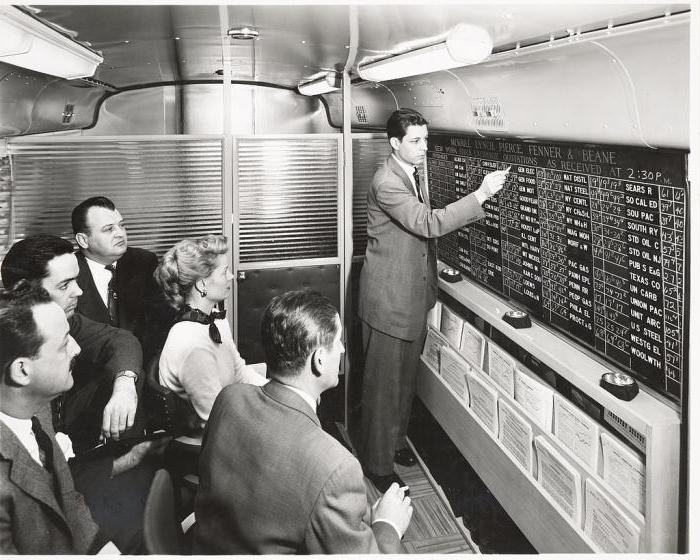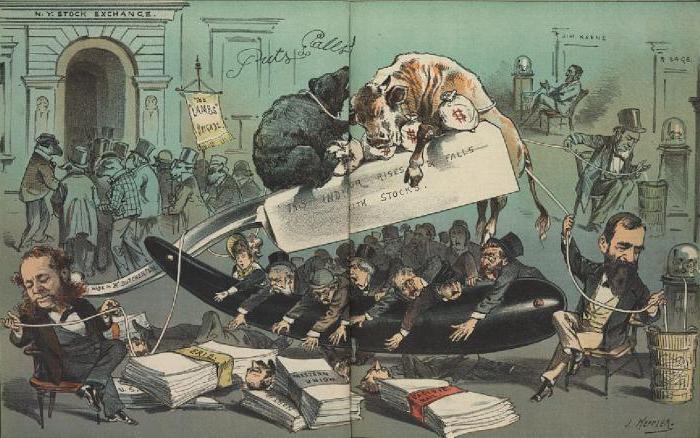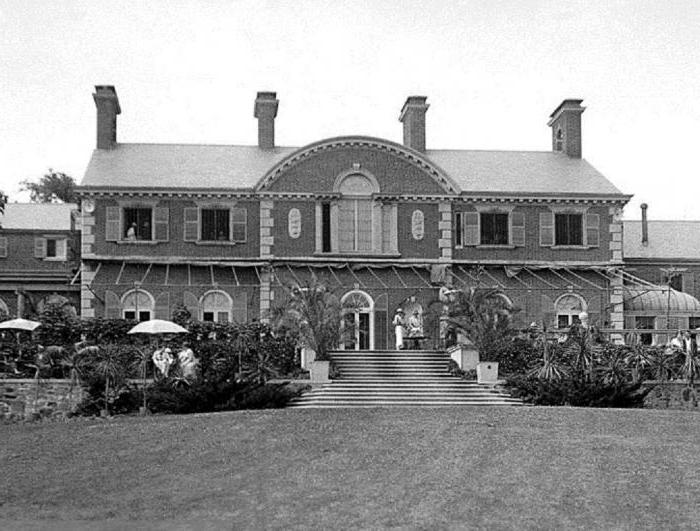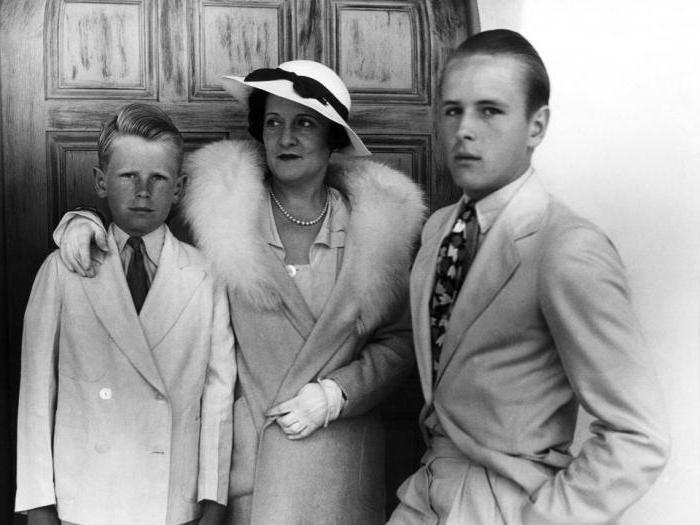Jesse Lauriston Livermore was one of the most famous traders of the XX century. Few could accumulate and lose money as fast as he did. Jesse got his nickname Boy Plunger (Risk Boy) due to the fact that he acquired large volumes of assets or commodity items. Livermore lived the same way he traded - at full speed. A successful trader was very popular among women of the opposite sex because of their appearance and vibrant lifestyle.
From plow to brokers
Livermore Jesse was born in South Acton, Massachusetts, in a farmer's family, in 1877. Having learned to read and count at 3.5 years old, by the age of 5 he was already looking through the financial columns of newspapers. When Jesse was 14 years old, his father took him out of school to help him with the housework. The young and self-confident Livermore went to Boston, where he began working at the Payne Webber brokerage company for $ 5 a week. His responsibilities included recording stock prices, bonds, and commodities on a large board.
During the update of constantly changing quotes, Livermore noted that price movements are often predictable. Soon he came to the conclusion that markets can be outwitted and earn large amounts of money.

Easy Money
At age 15, Jesse decided to risk part of his income and, putting in a small brokerage office $ 5, made a profit of $ 3.12. Over the course of several weeks, stock trading brought an income that exceeded his salary at Payne Webber. Thus, he earned more than $ 1000 - at that time a significant amount.
Brokerage was slightly better than gambling dens. After Jesse ignored his employer's warning to stay away from these institutions, Livermore was fired.
Now Jesse has become a full-time trader. His success was such that he was forbidden to enter all brokerage houses in Boston. In the central west and east coast, he earned about $ 50,000. To get around the prohibitions, I had to resort to disguise and use fictitious names.
New York, New York
In 1899, Livermore decided that it was time to challenge his abilities. He went to New York. In the same year, Jesse met his wife, Netty Jordan. They got married a few weeks after the first meeting and split up after a few months of marriage.
Jesse lost everything by playing on the stock telegraph, 30-40 minutes behind the numbers on the real market. He asked Netty to pawn some of the jewelry he had been given in order to start trading again, and this angered her.
Having been defeated, but with confidence, Livermore returned to the roots. He began to earn money trading stocks in brokerage houses in St. Louis, until the owners began to recognize him. Since the offices were now closed in front of him, he sent someone in his place and thus earned $ 5,000.
In 1901, trading on the exchange brought Livermore money with little or no effort, until he again lost everything on cotton. Jesse continued to trade conservatively, fearing to go too far. According to him, where he should have earned $ 20,000, he made $ 2,000. At the same time, he enjoyed the life of an attractive and wealthy bachelor.

Spa illumination
By 1906, in his 28 years, Livermore had earned $ 100,000, but he began to lose confidence. Then Jesse went on vacation to Palm Beach. His own conservatism, combined with a contradictory history of victories, made him doubt his ability to trade in the stock market.Therefore, he took a break, which became a turning point in his life.
Livermore had a “psychic surge” that he had never felt before, and he decided to take a short position on Union Pacific shares, and he did it in a big way. Friends thought that the risky boy had either lost his mind or used insider information. Shares began to rise, and Jesse was on the verge of bankruptcy. He returned to the city and found out about the San Francisco earthquake that caused the sharp fall of Union Pacific. Trading on the exchange provided Livermore with a profit of $ 250,000, although he was now extremely cautious: the market continued to fall after he closed his position. This case gave the trader a clear understanding of the danger of blindly following advice.
Rescue hero
Livermore Jesse gained a reputation as a hero during the collapse of 1907. When the stock market began to fall, he instinctively took a short position, earning a huge amount of $ 1 million per day. But, seeing that the market is in crisis, Jesse decided to do the right and wise thing. He started buying everything he could (partly at the request of JP Morgan). His actions prompted many other Wall Street residents to do the same - and the market began to recover. Livermore became a hero. Following his example, many of his colleagues became rich.

Gann Memories
William Gunn in his book “45 Years on Wall Street” called Livermore one of the most spectacular traders of his time. Gunn claimed that Jesse was a noble person who believed that debt should be paid even after he was exempted from this by a bankruptcy court.
Indeed, Livermore Jesse and many other traders and investors, including Gann himself, once lost their money when the brokerage firm Murray Mitchell and Company crashed in 1913. According to Gunn, in 1917, when Livermore returned and made a fortune, he not only returned to him the due part of the money lost due to the bankruptcy of Mitchell, but also paid everyone else. The author noted that the nobleness of the trader, his honesty and honor were the reasons that after the next ruin of Jesse in 1934, Gann personally supported him and persuaded others. Thanks to him, the risky boy returned and began to make money again.
The only thing Gann criticized Livermore for was the ability to make money with him combined with the inability to save it. According to Gann, Jesse had a thirst and desire for power, and when he received a large amount of money, he could not trade conservatively. Livermore tried to make the market work according to its own rules, and not wait until it was ready to follow a natural trend.
The standard of wealth
The success of Livermore provided him with a lifestyle that many could only dream of. A tall slender blond - a stock market speculator, acquired a 60-meter yacht worth $ 200 thousand, a railway carriage, apartments in the Upper West Side. He became a member of most exclusive clubs and met famous women, including actress Lilian Russell. Over the year, he increased his fortune to 3 million US dollars. His trading tricks soon became well known, and people often said that someone was “as rich as Jesse Livermore.”

Teddy Price Betrayal
In 1908, Jesse was betrayed by a "friend" and lost millions. Then he had $ 5 million before losing everything by trading cotton on the Chicago Board of Trade. He listened to Teddy Price, a famous cotton trader, and could not explain why, since he knew that it was wrong. When Price advised Jesse to buy, he sold with the rest of the manufacturers. Livermore was sunk.
Bankruptcy became inevitable in 1915. Shares acquired in 1907 to prevent a market crash allowed it to stretch its decline for several years, as the economy was going through a long “bear” period. A year later, he earned $ 5 million, riding a bull trend.
During World War I, Livermore assumed that coffee would rise in price significantly, and established enormous long positions. His profit was in the millions of dollars, but the coffee contract was canceled. The government felt that he was speculating in wartime. This bankrupted Livermore for the third time.
Second marriage and further career
After a long and scandalous divorce from Netty Jordan (including the episode when he hired a private detective to get his own car back), Livermore married 22-year-old Dorothy, a dancer from the Siegfeld’s Madness show.
In 1919, the first son, Jesse Livermore II, was born to the spouses. And in 1922, Paul was already on his way. The young father decided to buy expensive real estate in Great Nack and left Dorothy a blank check to furnish the house. They were financially independent, included in high society and did not want anything more. It was a period of unlimited family happiness.
The name of Livermore was circulated by the media, people bought and sold on the basis of his recommendations published in newspapers. He conducted a trading operation that brought in $ 15 million. Two years later, Jesse moved to a larger office with 60 employees.
Livermore became well known for his tactics of waiting until the shares he bought rose until he made a significant profit, and then “shared a secret” with a journalist from the New York Times or another influential newspaper that these securities are a great buy. . Then Jesse closed his impressive open position in the wake of the hype created by the article.
Edwin Lefebvre contacted Livermore to write "Memoirs of a Stock Trader." The book was published in 1923. However, no one understood that she in a veiled form revealed her own life as a trader bred under the name of Lori Livingston. The book was met surprisingly well and withstood several reprints.

Happy life
In the same year, Livermore had a second son. His fame on Wall Street continued to grow. In 1925, he earned $ 10 million trading wheat and corn on the Chicago Mercantile Exchange, competing with famed trader Arthur Cutten in his ability to manipulate the market.
In 1927, two robbers burst into Livermore's house and held him and his wife at gunpoint. Dorothy was surprisingly calm throughout the test, persuading criminals to leave some of the most valuable jewelry. When they left, she asked the robbers not to make noise so as not to wake the children.
Despite the happiness of the family, things began to change. Dorothy's addiction to alcohol became uncontrollable.
Black tuesday
Then Black Tuesday came, and stock market crashes followed. Livermore accidentally felt that there was some movement in the market, and decided to live in his office, trading on the days preceding October 29th.
When the news began to spread about traders who had lost everything, Dorothy Livermore and her mother, who were in a house in Evermore, panicked. When Jesse returned, they cried, believing that wealth was lost, not knowing that he had earned $ 100 million.
At the peak of his career, Livermore owned huge estates in several countries, Rolls-Royce cars, yachts and was known for his generous parties. It also contained a set of secret offices on Fifth Avenue. It was in these offices with numerous telephone and private telegraph lines that Livermore conducted full-scale brokerage operations. The room was equipped with a full-sized quotation board, supported by clerks in an up-to-date condition. In addition, he hired a team of researchers. The sole purpose of this branch was to promote its own trading and investment activities.
Third wife
By 1932, Dorothy's alcoholism combined with Livermore's affairs and their habit of generous spending complicated relations.Throughout this marriage, Jesse had lovers everywhere, including in Siegfeld's Tricks, where Dorothy still had friends. She felt humiliated.
Dorothy requested a quick divorce and received a modest compensation of $ 10 million. She passed the house and custody of her sons. On the same day, Dorothy married a young man - a former guardian of Prohibition.
At 56, Livermore, now no longer young and not very rich, decided to spend his last money on travel, where he met his third wife. He met with American singer Harriet Metz in Vienna. Four times the widow of suicidal husbands, she already had her own money inherited from them.
Livermore planned to use leave to restore strength and avoid imminent bankruptcy after returning to New York. But he was also emotionally worn out.
In 1933, Jesse suffered from depression. After a 26-hour drinking bout, he ended up at the police station and told the police that he had lost his memory.
Livermore Jesse, after a series of family tragedies and the creation of the Securities Commission, began to realize that he would no longer be able to trade as before. His wife's money kept him in a state of comfort, which allowed him not to feel the need to trade.

Suicide
Unable to increase capital at the same pace, Livermore decided to sell his trading principles in print. The book "How to Trade Stocks" was published in 1940 in two versions - in leather binding and "for all", but it failed to capture the hearts and minds of the trading public.
Later that year, Jesse Livermore, after drinking two drinks at the Sherry Netherlands Hotel in Manhattan, wrote eight pages to his third wife, mentioning that his life was a failure.
The man who became known as the Risky Boy, the Big Bear, and the King of Cotton entered the dressing room, sat in the chair, and shot himself in the head. Thus ended the life of a man who was perhaps the largest trader of all time. Jesse Livermore, an extraordinary trader, the man who made millions, left a fortune of under $ 10,000.
In the New York Times, the epitaph for the famous speculator replaced the editorial: “What good did he do, what harm did he do, that his life meant for himself and for others - these are questions for the writer. He was driven by passion. He lived at a time when his speculations seemed like tricks of a boy stealing pennies. He left no clouds of glory behind, nor miasms of human suffering. The "street" on which he worked is no longer the same as before. His death marked the end of an era. ”
Jesse Livermore: how to trade stocks
The famous trader did not have any formal education or exchange trading experience. He made himself, learning from his wins and losses. It was these successes and failures that helped cement the ideas that are still used in trading in the markets today.
Here are some of the rules of Jesse Livermore:
- Money is not made on price fluctuations on the day of trading. Jesse emphasized the importance of focusing on the economy as a whole rather than on individual stocks.
- We need to adopt a buy and hold strategy on a bull trend and sell when it loses momentum. Livermore always had an exit strategy ready.
- The basics of the company, market and economy should be explored. Jesse divides investors into successful and unsuccessful in the effort they put into investing.
- Short-term traders will eventually lose their capital.
- You should ignore insider information and do your own independent analysis. Livermore was very careful in choosing sources of information and recommended using several.
- It is necessary to change, adapting investment strategies to market conditions.

Livermore Jesse: Books
The great trader died over 75 years ago and left the world three things.
The book How to Trade the Stock Market was copyrighted in 1940, the year Livermore died. It is believed that he wrote it in a desperate attempt to raise capital. It is about substantiating the process of making its trading decisions.
The book “Memoirs of a Stock Market Speculator” was written by Edwin Lefebvre in 1923 and is the most popular piece about speculation.
Livermore's third legacy is the story of his life. On the one hand, he was an honest man who paid his debts, although he was not legally obliged to do so. On the other hand, he was a major trader using any legal tactic to increase his chances of making money.
The only thing his supporters and critics agree on is that he was a true master of the market. According to him, a speculative game is the most exciting game in the world. But this is not a game for fools, mentally lazy, people of lowered emotional balance, and not for adventurers who want to get rich quick. They will die poor.








